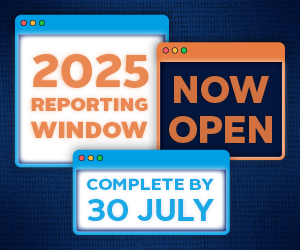The Inevitable Policy Response, a climate transition forecasting consortium, produces two climate scenarios: a Forecast Policy Scenario (FPS), in which global deforestation ends in 2030 and a Required Policy Scenario (RPS) in which deforestation ends in 2025.
The Brazilian Amazon is a hotspot of global deforestation, leading to approximately 0.18GT CO2eq of net emissions per year over the last 20 years. This is equivalent to three times the annual emissions from New York City. Critically, illegal activities have been a key driver to deforestation. Addressing this must be a primary focus in any attempt to end deforestation.
The outcome of the October elections in Brazil at both the presidential and congressional levels are a pivotal moment.
This analysis by Kaya Advisory, commissioned by IPR, explains why recent trends in Brazilian deforestation rates, exacerbated by the tacit allowance of illegal activity makes a clear end to deforestation by 2025 virtually unattainable.
However, the re-election of ‘Lula’ da Silva would make an end to illegal activity by 2030 (if not well before) and the achievement of net zero emissions from the Brazilian Amazon possible. A sympathetic Congress would provide a needed helping hand.
A re-election of Jair Bolsonaro means even 2030 as an end date for deforestation is under threat. He has shown no executive interest in curbing illegal deforestation, indeed it has accelerated under his administration. Legislation pending could make matters worse.
While not forming part of the analysis in this paper, efforts by private sector initiatives to address commodities that are related to deforestation are also helpful in either outcome. As would any international action in other countries. The one potential positive is the emergence of a potential Brazilian carbon market. Under Lula, its development could potentially be slower but more focused on attaining environmental outcomes.
The RPS, and other low-overshoot 1.5°C scenarios are put under increased challenge by these findings. Other geographies and sectors, already stretched in these scenarios, are required to provide even more emissions reduction.
What constitutes an end to deforestation?
Illegal deforestation accounts for around 90% of Brazil’s deforestation. Ending this, which in reality is an enforcement issue for the executive branch, is the core need. The Brazilian NDC talks of ending illegal deforestation. Our RPS and FPS models assume stable forest cover and emissions in the Brazilian Amazon by 2025 and 2030 respectively. This is net zero deforestation, which requires some afforestation as well, on top of ending the 90% illegal gross deforestation. We would note that from a Just Transition perspective finding alternatives for those whose livelihood depends upon clearing forest land must be considered in any comprehensive policy package.
Mark Fulton, Project Director Inevitable Policy Response
Executive Summary
-
A series of environmental legislative proposals, together dubbed the ‘death package’, awaits ratification in Brasilia. If these become law, deforestation rates could be locked into the future of the Amazon.
-
This could be catastrophic, not only because the Amazon is the world’s pristine rainforest biome but also given its crucial role as a reservoir for carbon dioxide.
-
Modelling by the Inevitable Policy Response (IPR) shows that a target of 1.5°C of warming would be in danger should net deforestation not end by 20253. IPR’s Forecast Policy Scenario, which incorporates global policy action and currently forecasts 1.8°C of warming, requires an end to net deforestation by 2030.
-
This situation makes the upcoming national general elections (October 2nd) in Brazil pivotal for climate ambitions. Currently this is a two-man race between former president Luiz Inacio “Lula” da Silva, who leads in early polling, over the current president, Jair Bolsonaro.
-
The Brazilian Congress will also have a large bearing on the direction of policy making. As of today, Bolsonaro’s allies occupy key positions in Congress which can diminish or strengthen in upcoming elections. Importantly, if Lula wins, his land use position will be impacted by the need to govern with a broad coalition.
-
Respective historical environmental records for the two candidates stand in stark contrast. Between 2003 and 2010, Lula’s policies helped engineer a historic fall in deforestation rates, meanwhile Bolsonaro, in actively undermining the executive institutions which punish environmental offenders, has overseen a dramatic increase in deforestation. We describe here the strategy and actions of each.
-
The likelihood of the ‘death package’ passing before the election is low. After the election the odds for ratification rise but in a way that is nuanced and dependent upon the elections.
-
Should Bolsonaro be re-elected for another four years, the chance of reaching net zero deforestation in that time frame is very low.
-
In contrast, Lula being re-elected leaves open the possibility for net deforestation to stop by the end of the decade, especially if strong action is taken on illegal activities as in his previous administration.
-
In either scenario, achieving net zero deforestation by 2025 is unlikely. This is because Brazil’s biggest problem at present is not the lack of robust legislation but enforcement against illegal activities. We dissect the nuance between federal legislative action and executive institutional action.
-
Carbon markets offer a potential positive development for Amazon protection but international investors should bear in mind the different directions such a market could take. The development of a carbon market in Brazil is part of a wider long-term strategy of the private sector to support voluntary and regulatory initiatives to penalize commodities related to deforestation.
Downloads
Can Lula save the Amazon? A Brazil Policy Analysis
PDF, Size 1.68 mb












